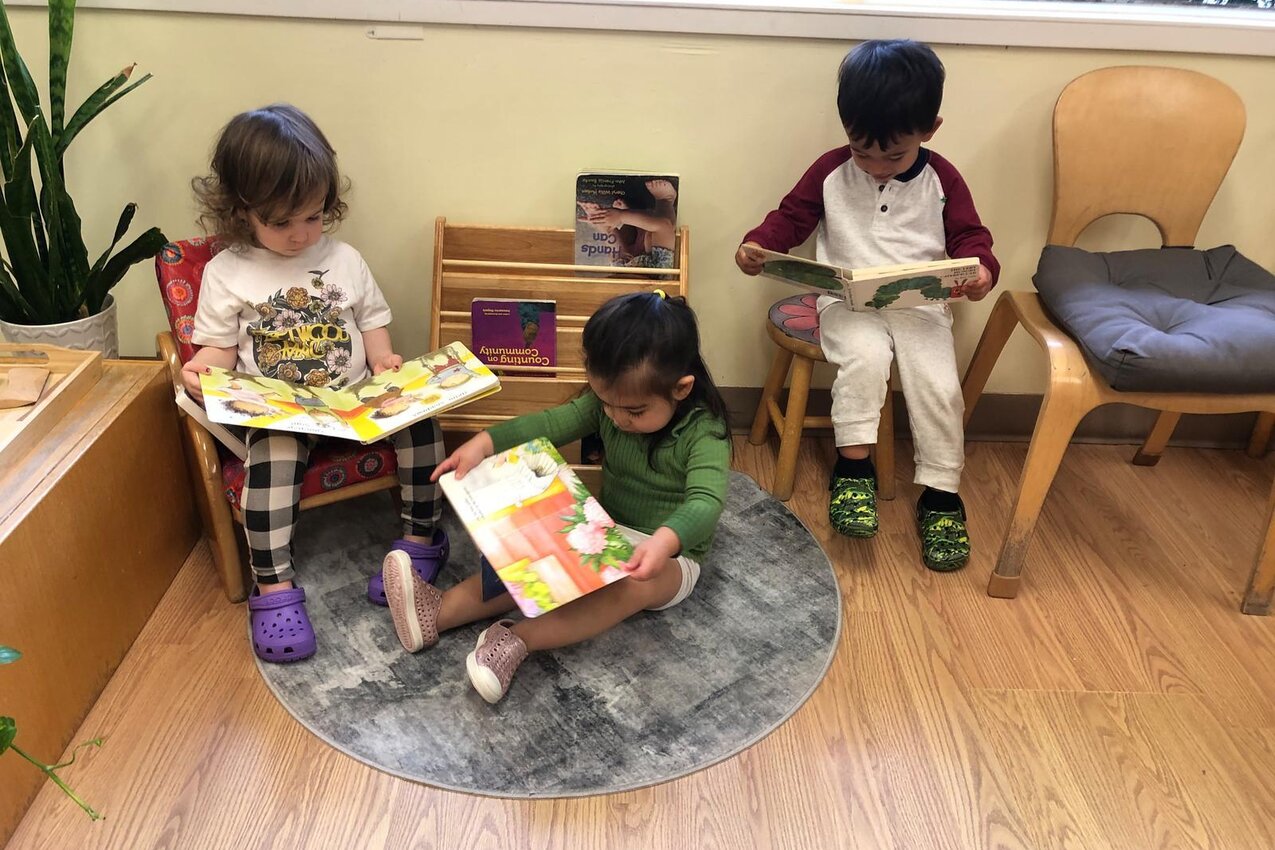
Nurturing Language and Communication in the Toddler Community
— Maria Montessori, The Absorbent Mind“At one year of age, the child says his first intentional word...his babbling has a purpose, and this intention is a proof of conscious intelligence. He becomes ever more aware that language refers to his surroundings, and his wish to master it consciously becomes also greater…Subconsciously and unaided, he strains himself to learn, and this effort makes his success all the more astonishing.”
All children have an internal drive to develop language. Maria Montessori observed that a child rapidly acquires language from birth without being taught. She observed that children from birth until three years take in their environment unconsciously and shape themselves from any information and stimulation they encounter. Young children learn language simply by living around others who are using language. What language they acquire is dependent upon the culture and environment that surrounds them. Language and communication skills are very important milestones in early childhood. Communication allows the child to express their needs and ideas to others; they learn to cooperate, collaborate, receive knowledge, and pass on knowledge to others.
Learning to be! This is every toddler's goal. It is both simple and richly complex. Between the ages of two and three years old, the child is newly aware of possessing their own identity separate from their family, and they are ready to truly be that person with full independence. A critical element of this self-realization is the ability to communicate. Toddlers begin to understand conversational language and work to express their thoughts, experiences, and feelings. They yearn to label every object in their environment and know every detail of the work they find in the classroom.
The most important tool in the environment when it comes to language is the adult. Hearing the adults speak with other adults and children is so important. Conversation provides the ultimate experience of “learning by doing.” The conversations that toddlers have with adults in the classroom provide them with the confidence that they are being respected and seen, they feel valued for their opinions and feelings, and are given the opportunity to practice articulating language with someone who can echo words back to them with exact pronunciation. These conversations provide them with a model of conventional etiquette and flow. Through conversation, the young child learns the functions of conversation, conflict resolution, self-expression, storytelling, and clarification. In our environment, we aim to converse with children through the morning upon arrival, between a child's tasks in the work cycle, and during toileting and meal times. Any item in the room, an event in our day, or a thought from a child becomes a worthy and captivating topic. Conversations with the children are spontaneous and natural.
By immersing children in a language-rich environment through reading, verbalizing daily activities, and incorporating songs and rhymes, we provide them with the tools to expand their vocabulary and understanding of the world. Actively engaging in conversations, listening attentively, and asking open-ended questions fosters children’s communication skills and encourages them to express themselves. When speaking to infants and toddlers, use simple language, enunciate words, and make eye contact to capture their attention. For a child to acquire language they must be spoken to directly. Every interaction with an infant or toddler is an opportunity for language development, social-emotional growth, and the building of meaningful relationships. By speaking to children respectfully and honoring their boundaries, we empower young children to become self-assured, communicative, and independent individuals who can navigate the world with confidence.
Written by Gabby Almanza, Dogwood Toddler Guide
